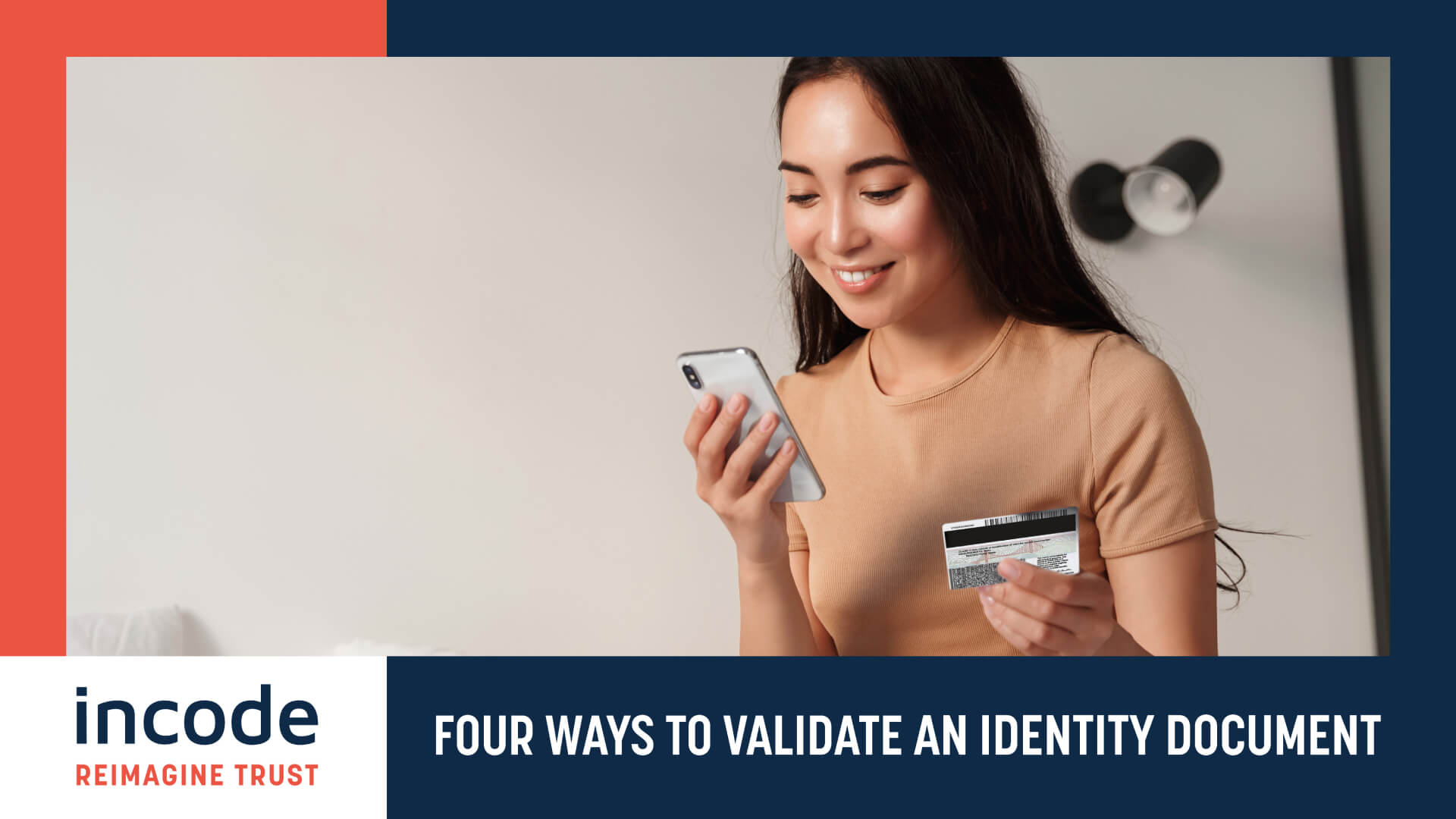How do you know that a person is who they say they are?
A robust identity verification (IDV) solution includes identity document validation as one of its many features. But validating an identity document consists of more than just examining the document itself. Incode’s revolutionary identity document validation solution includes four ways to validate an identity document.
One way to confirm a person is the genuine owner of the real-world identity they are claiming is by accurately validating an identity document the person possesses, such as a government-issued driver’s license or passport.
1. Is the person possessing the identity document the rightful owner?
How many underage people have “borrowed” the driver’s license of an older sibling to buy alcohol? You can prevent this by comparing the face on the identity document with the face of the person who possesses the identity document. In the world of remote verifications, you also need to ensure that the person possessing the identity document is a real person and not an imposter.
Incode is the author of our own facial recognition algorithm and does not rely on a separate company to provide this critical piece of Incode’s solution. The facial recognition algorithm is fully in-house developed and is also independently tested by the U.S. National Institute of Standards and Technology (NIST). You can view the accuracy and performance of Incode and some other vendors at the NIST FRVT 1:1 page. If you’re using another identity verification solution, can you find your vendor in the list?
Incode also independently wrote our own liveness detection algorithm and does not rely on a separate company to provide liveness detection. The Incode-developed liveness detection has been evaluated and conforms with Presentation Attack Detection Level 2, as confirmed by iBeta. You can view the iBeta confirmations for Incode and some other vendors at the iBeta confirmation letters page. Is your vendor listed?
2. Can the IDV solution read the identity document?
Some vendors do a very good job at reading the identity documents from a single country. But that isn’t helpful when someone from another country wants to open a bank account, check into a hotel, or attend a sporting event.
Incode supports over 4,600 distinct documents for nearly 200 countries, and we continue to add to the list. This means that citizens of your country and visitors to your country are most likely supported.
3. Is the information on the identity document validated?
Incode performs a number of checks on the identity document to ensure that the printed information is consistent with the information barcoded on the document.
In addition, Incode can compare the information on the identity document with the information stored in government and non-government databases for selected jurisdictions, confirming that the document matches the information in the central records.
4. Has the identity document been tampered with?
In some cases, fraudsters take an original, valid identity document and tamper with it to produce a fraudulent document.
Incode can detect this type of fraud. In a recent test with three United States government agencies, Incode successfully detected 100% of tampered identity documents. In some cases, a competing vendor was unable to determine whether an identity document had been tampered with or not. Incode detected all cases of tampering.
Want to learn more?
See Incode’s brief, “Incode’s Revolutionary Identity Document Validation.”
